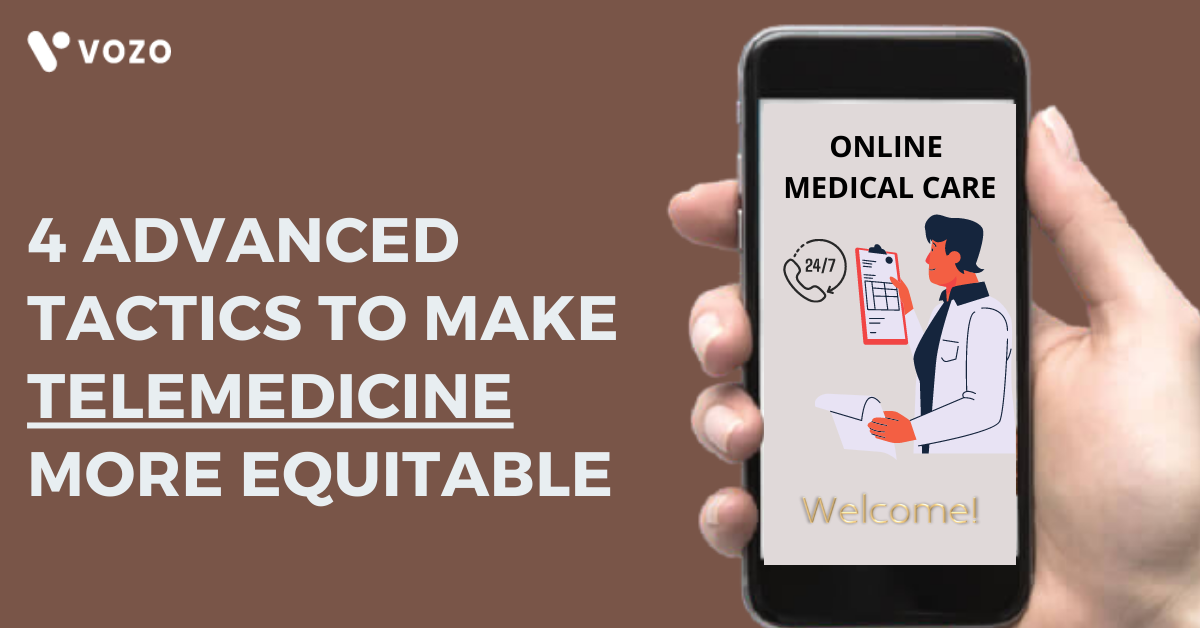4 Advanced Tactics To Make Telemedicine More Equitable
A huge number of challenges are arising day by day from the wider adoption of best telemedicine services, there are a lot of discussions among the healthcare providers on how to minimize telehealth-based health inequities.
Telemedicine provides a great way to safely coordinate and deliver quality care to patients anywhere. However, it also poses a risk of widening inequities in health care in the United States by improving care for those who already have access while leaving behind those who are in need.
1. Be ready to invest in telemedicine training
Telemedicine is a different concept for both providers and patients to experience healthcare. For example, most physicians do not routinely ask patients at the beginning of an encounter, “Can you see and hear me?” Yet, this is an important first step when conducting a video visit.
It’s unrealistic to expect that physicians will be experts at telemedicine from the start. Therefore, upfront investment in training is critical. Virtual interactions require physicians to be especially adept at the “soft” skills of medicine: empathy, clear communication, and flexibility. It can be challenging to teach even seasoned physicians to adapt these skills into a virtual format. Therefore, a shift to virtual medicine requires such training at all levels of medical education.
2. Understand your patient needs on telemedicine
Crucially, health systems must carefully consider their patients’ access to essential technology required for telemedicine encounters, including broadband internet, computers with webcams and microphones, and smartphones with reliable data services. Before the large-scale implementation of telemedicine across the health system,
3. Check out how patients can connect with your telemedicine solutions
Before telemedicine implementation, health systems should thoughtfully consider how patients will use the service. Will the target patient population already have established primary care providers within the system? Or will telemedicine be their initial encounter with the health system?
An isolated telemedicine visit is unlikely to have a long-term impact on a patient’s overall health unless it is integrated within specific services, particularly primary care. Therefore, telemedicine can be a critical entry point to provide comprehensive health care services for patients who have not had regular access to medical care.
One especially challenging population is homeless individuals. Rather than enjoying integrated and continuous care anchored by a dedicated provider, homeless patients are more likely to seek piecemeal and fragmented care from a collection of providers who often are in separate health systems.
RELATED: 3 Great Ways To Use Your EHR Software For Telemedicine Visits
4. Make sure you choose the right types of providers
Doctors do not always have similar attitudes towards virtual care delivery. Each medical specialty naturally has different proclivities, and some skills more easily translate to telemedicine than others. Using the least costly medical providers may not always deliver the best quality or value to your patients.
Generally, registered nurses, nurse practitioners, or physician assistants — who are less costly than physicians — operate health systems’ advice lines. Typically, patients call an advice line to find out whether their medical condition is urgent or emergent.
Final Thoughts
The Covid-19 pandemic has created a huge evolution in digital technologies with the great potential to help patients in accessing care. As mentioned strategies, when the telemedicine solutions are designed by considering patients’ needs and optimizing the strengths of a health system’s capabilities, telemedicine can greatly help U.S. healthcare more equitable.
Looking for the best telemedicine solutions for your practice?
Today patients are enjoying telemedicine visits. Do you wish to offer your patients the best telemedicine solutions? Vozo offers complete telemedicine solutions to a wide range of medical practices.
About the author

With more than 4 years of experience in the dynamic healthcare technology landscape, Sid specializes in crafting compelling content on topics including EHR/EMR, patient portals, healthcare automation, remote patient monitoring, and health information exchange. His expertise lies in translating cutting-edge innovations and intricate topics into engaging narratives that resonate with diverse audiences.













